Do you have a question about the Chevrolet Avalanche and is the answer not in the manual?
Comprehensive guide on safety belt usage for everyone, including proper wear and child safety.
Guidance on using safety belts for older children and infants, covering restraint systems and placement.
Explanation of frontal and side impact airbags, their function, and important safety precautions.
Details on the content theft-deterrent alarm system and its activation, including Passlock®.
Guidelines for new vehicle break-in, ignition positions, and starting the engine.
Explanation of dual climate control system, fan speed, mode selection, and temperature control.
Description and location of warning lights, gages, and indicators on the instrument panel.
Information on DIC display, operation, customization, and warnings/messages.
Information on alcohol's effects on driving abilities and statistics related to alcohol-impaired driving.
Details on perception and reaction time in braking, stopping distances, and avoiding heavy braking.
Explanation of the ABS system, its operation, and warning lights.
Information on the Traction Assist System, its operation, and related DIC messages.
Overview of the StabiliTrak® system, its function, and troubleshooting messages.
Discussion on factors leading to loss of vehicle control, including skidding.
Explanation of different types of skids and how to handle them, including avoiding acceleration skids.
Guidance on how to free a stuck vehicle, including the 'rocking' method and cautions.
Important considerations for loading your vehicle for off-road driving, focusing on weight distribution and security.
General information and considerations before towing a vehicle or trailer.
Consulting dealers or professionals for towing assistance and understanding towing types.
Explanation of dinghy and dolly towing methods for recreational purposes.
Advice and safety rules for towing a trailer, emphasizing proper equipment and handling.
Guidance on performing personal vehicle maintenance, emphasizing proper manuals and tools.
Information on recommended fuel types, octane ratings, and gasoline specifications for optimal performance.
Safety precautions and instructions for refueling a vehicle, emphasizing fire prevention.
Safety cautions regarding the electric fan and hot engine parts when checking under the hood.
Diagrams identifying key components in the engine compartment for both 5300 V8 and 8100 V8 engines.
Guidance on checking engine oil levels, adding oil, and identifying the correct type of engine oil to use.
Explanation of the vehicle's computer system for monitoring and indicating engine oil change needs.
Instructions on when to inspect and how to replace the engine air cleaner/filter.
Guidance on when to check and change automatic transmission fluid, and how to check the level.
Information on the cooling system, types of coolant, and safety precautions when adding coolant.
Information on engine overheating, related messages, and operating modes for safe driving.
Details on brake fluid, wear indicators, pedal travel, and brake adjustment.
Step-by-step instructions for safely jump-starting a vehicle, including important cautions.
Tips on what to expect and how to handle a tire blowout or slow leak.
Step-by-step instructions and safety precautions for changing a flat tire.
Explanation of how fuses and circuit breakers protect wiring circuits from electrical problems.
Details on when to perform Maintenance I and II services based on the 'CHANGE ENGINE OIL' message.
Table outlining required services based on mileage intervals for various vehicle components.
List of recommended fluids and lubricants for various vehicle systems, including part numbers.
Steps for resolving concerns with dealerships and Chevrolet Customer Assistance.
Overview of Chevrolet Roadside Assistance services included with the new vehicle warranty.
Guidance on reporting safety defects to the US Government, Canadian Government, and General Motors.
Comprehensive guide on safety belt usage for everyone, including proper wear and child safety.
Guidance on using safety belts for older children and infants, covering restraint systems and placement.
Explanation of frontal and side impact airbags, their function, and important safety precautions.
Details on the content theft-deterrent alarm system and its activation, including Passlock®.
Guidelines for new vehicle break-in, ignition positions, and starting the engine.
Explanation of dual climate control system, fan speed, mode selection, and temperature control.
Description and location of warning lights, gages, and indicators on the instrument panel.
Information on DIC display, operation, customization, and warnings/messages.
Information on alcohol's effects on driving abilities and statistics related to alcohol-impaired driving.
Details on perception and reaction time in braking, stopping distances, and avoiding heavy braking.
Explanation of the ABS system, its operation, and warning lights.
Information on the Traction Assist System, its operation, and related DIC messages.
Overview of the StabiliTrak® system, its function, and troubleshooting messages.
Discussion on factors leading to loss of vehicle control, including skidding.
Explanation of different types of skids and how to handle them, including avoiding acceleration skids.
Guidance on how to free a stuck vehicle, including the 'rocking' method and cautions.
Important considerations for loading your vehicle for off-road driving, focusing on weight distribution and security.
General information and considerations before towing a vehicle or trailer.
Consulting dealers or professionals for towing assistance and understanding towing types.
Explanation of dinghy and dolly towing methods for recreational purposes.
Advice and safety rules for towing a trailer, emphasizing proper equipment and handling.
Guidance on performing personal vehicle maintenance, emphasizing proper manuals and tools.
Information on recommended fuel types, octane ratings, and gasoline specifications for optimal performance.
Safety precautions and instructions for refueling a vehicle, emphasizing fire prevention.
Safety cautions regarding the electric fan and hot engine parts when checking under the hood.
Diagrams identifying key components in the engine compartment for both 5300 V8 and 8100 V8 engines.
Guidance on checking engine oil levels, adding oil, and identifying the correct type of engine oil to use.
Explanation of the vehicle's computer system for monitoring and indicating engine oil change needs.
Instructions on when to inspect and how to replace the engine air cleaner/filter.
Guidance on when to check and change automatic transmission fluid, and how to check the level.
Information on the cooling system, types of coolant, and safety precautions when adding coolant.
Information on engine overheating, related messages, and operating modes for safe driving.
Details on brake fluid, wear indicators, pedal travel, and brake adjustment.
Step-by-step instructions for safely jump-starting a vehicle, including important cautions.
Tips on what to expect and how to handle a tire blowout or slow leak.
Step-by-step instructions and safety precautions for changing a flat tire.
Explanation of how fuses and circuit breakers protect wiring circuits from electrical problems.
Details on when to perform Maintenance I and II services based on the 'CHANGE ENGINE OIL' message.
Table outlining required services based on mileage intervals for various vehicle components.
List of recommended fluids and lubricants for various vehicle systems, including part numbers.
Steps for resolving concerns with dealerships and Chevrolet Customer Assistance.
Overview of Chevrolet Roadside Assistance services included with the new vehicle warranty.
Guidance on reporting safety defects to the US Government, Canadian Government, and General Motors.
| Brand | Chevrolet |
|---|---|
| Model | Avalanche |
| Category | Automobile |
| Language | English |
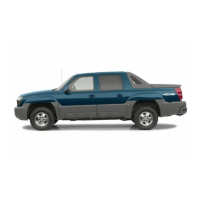
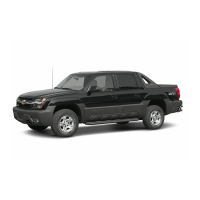

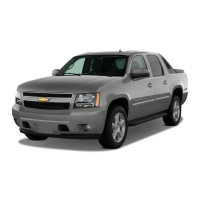


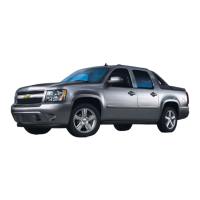
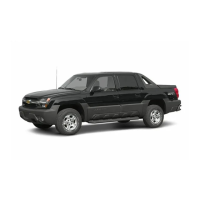

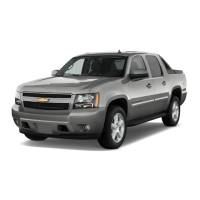
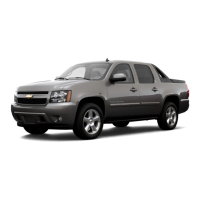
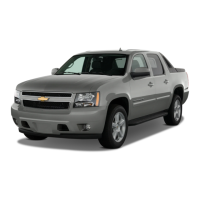
